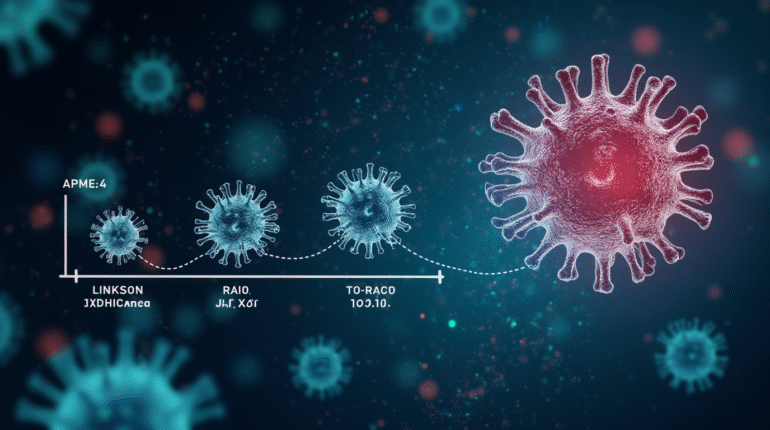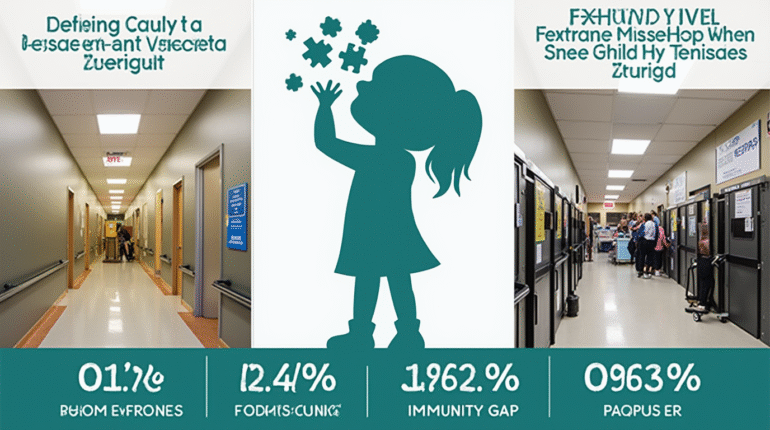As Australia braces for winter, leading epidemiologists and public health officials are issuing urgent warnings about a looming “triple threat” of respiratory illnesses that could create the perfect storm for healthcare systems nationwide. This unprecedented convergence of COVID-19, influenza, and respiratory syncytial virus (RSV) threatens to overwhelm hospitals, strain medical resources, and disrupt workplaces and schools nationwide.
Understanding the Triple Viral Threat
1. COVID-19: An Ever-Changing Pandemic
Health authorities are closely watching new Omicron offshoots: KP.2, KP.3, and the recently found KP.4.1 strain, which seem responsible for much higher spread rates. These variants don’t appear to cause more severe disease than earlier strains, but better immune evasion means even vaccinated people and those previously infected are at risk.

What is worrying is that there has been a big fall in booster uptake, about 30% of eligible Australians have taken the newest XBB 1.5 formulation
2. Influenza: The Comeback of a Seasonal Threat
The National Notifiable Diseases Surveillance System’s early surveillance data shows that flu cases are already 47% greater than the five-year average at this point in the year. The main H3N2 type this season has, in the past, been linked to more serious effects on older adults and children. What is more worrying is that vaccination coverage is still shockingly low, with only 40% of at-risk populations who received their flu shot as of May.
3. RSV: A Quiet Threat for At-Risk Groups

Respiratory syncytial virus causes fairly mild, cold-like symptoms in healthy adults; however, it can be deadly in infants and older adults. It has shown very atypical patterns of transmission already, pediatric hospitals in New South Wales and Victoria reporting occupancy of more than 90% beds, with worrying capacity about to get worse as winter progresses.
Why This Winter Poses Unique Challenges
There are several converging factors that make this winter particularly dangerous. Immunity Gaps:
- Immunity Gaps: Because of years of COVID-19 restrictions, most Australians have never been exposed to these normal seasonal viruses.
- Vaccination Complacency: More importantly, children born during the pandemic missed exposure and hence built no immunity against these viruses.
- Vaccination Complacency: The rates for both COVID-19 and flu shots have dramatically dropped compared to previous years.
- Healthcare System Strain: Hospitals are still backlogged from the pandemic; many of them are critically short on staff.
The climate might play a role this winter. If it turns out colder than usual, folks could end up spending more time inside.
Expert Recommendations for Protection
Vaccination Strategy:
- COVID-19 Boosters: Health authorities strongly recommend the updated XBB.1.5 booster for all adults, particularly those over 65 or with chronic conditions.
- Influenza Vaccine: Annual flu shots are essential, particularly for pregnant women, young children, and seniors.
- RSV Prevention: New monoclonal antibody treatments, such as nirsevimab, are available for high-risk infants, while adults over 60 may qualify for the new Arexvy vaccine.
Applicable Precautionary Actions:
- Selective Masking: Choose to wear N95 masks in crowded indoor spaces, particularly during public transport and in medical facilities.
- Intensified Hygiene: Continue critical regular hand washing and surface disinfection, particularly in childcare settings.
- Early Testing & Treatment: Maintain rapid antigen tests at hand and seek antiviral medications where possible promptly on the appearance of symptoms.
Potential Healthcare System Impacts
Modeling suggests a worst-case scenario where simultaneous peaks of all three viruses could:
- Overwhelm emergency departments, with wait times potentially doubling
- Force cancellation of elective surgeries as ICU beds fill with respiratory cases
- Create staffing crises as healthcare workers fall ill
- Disrupt schools and workplaces through mass absenteeism
Government Responses and Preparedness
The state and federal governments are implementing several preparedness measures. These include increasing the vaccination drive by giving access to pharmacies and pop-up clinics, stockpiling antiviral drugs and pediatric hospital equipment, creating surge capacity plans for hospitals (possibly including temporary facilities), and soon-to-be-launched public awareness campaigns on the importance of vaccination.
Long-Term Implications and Research Needs
Such an evolving situation has put these areas back into focus:
- A better need for combination vaccines aimed at more than one respiratory virus
- Better ventilation rules for public buildings and schools
- Upgraded monitoring systems to spot new dangers sooner
- More funding for primary care to handle cases before they need a hospital
An appeal for every Australian
As winter approaches, health leaders emphasize the importance of taking action now to prevent catastrophe later. “This isn’t about creating panic, but about being properly prepared,” says Professor Paul Kelly, Australia’s Chief Medical Officer. “The tools to protect ourselves exist – vaccines, treatments, and sensible precautions. Using them is our best defense against what could be a very challenging winter.”
The time left for effective preparation is closing. Australians are asked to book vaccinations, check their household medical supplies, and make plans for possible sickness in their families before the winter surge gets fully underway.


